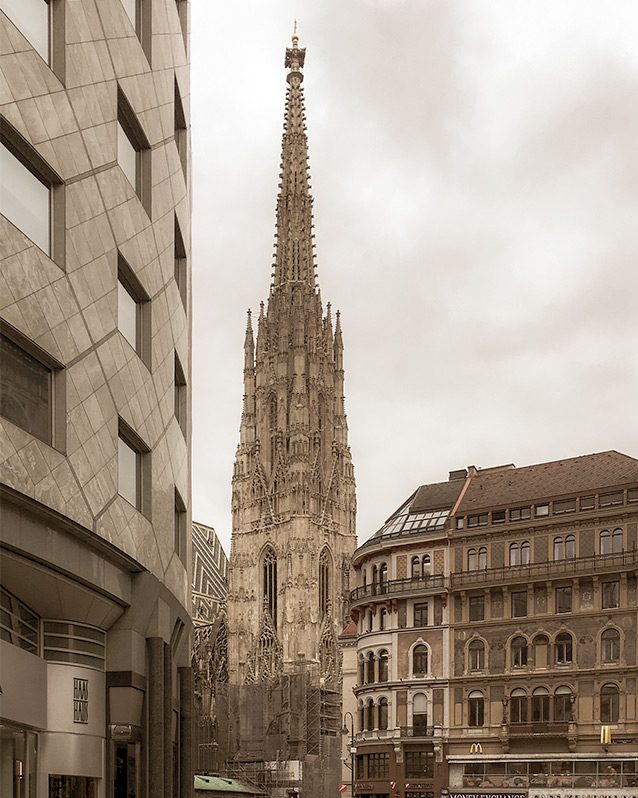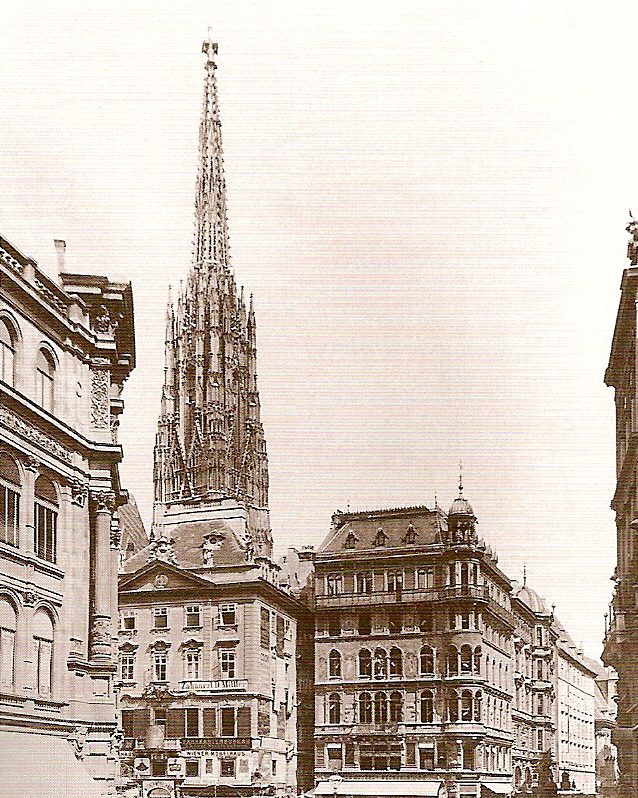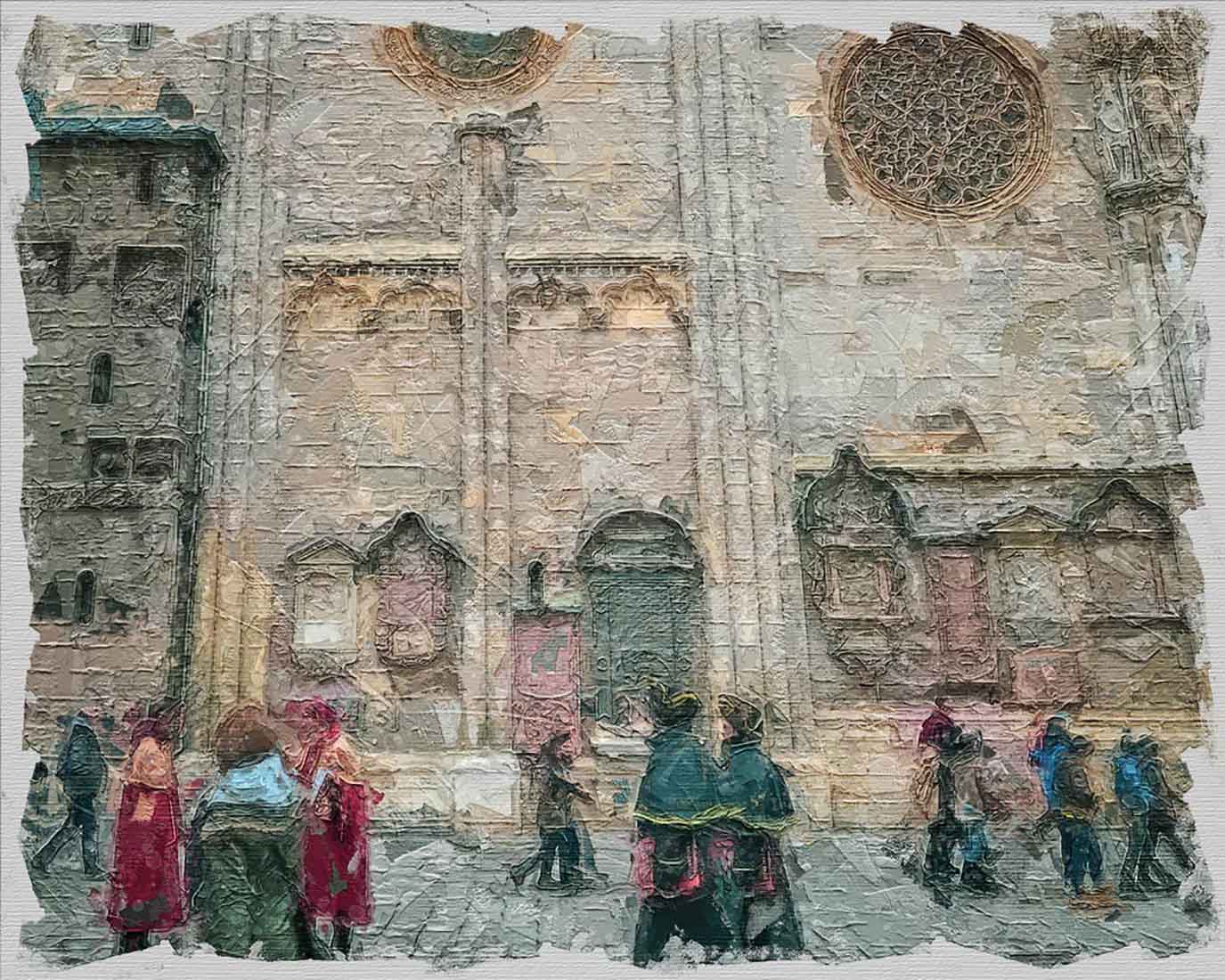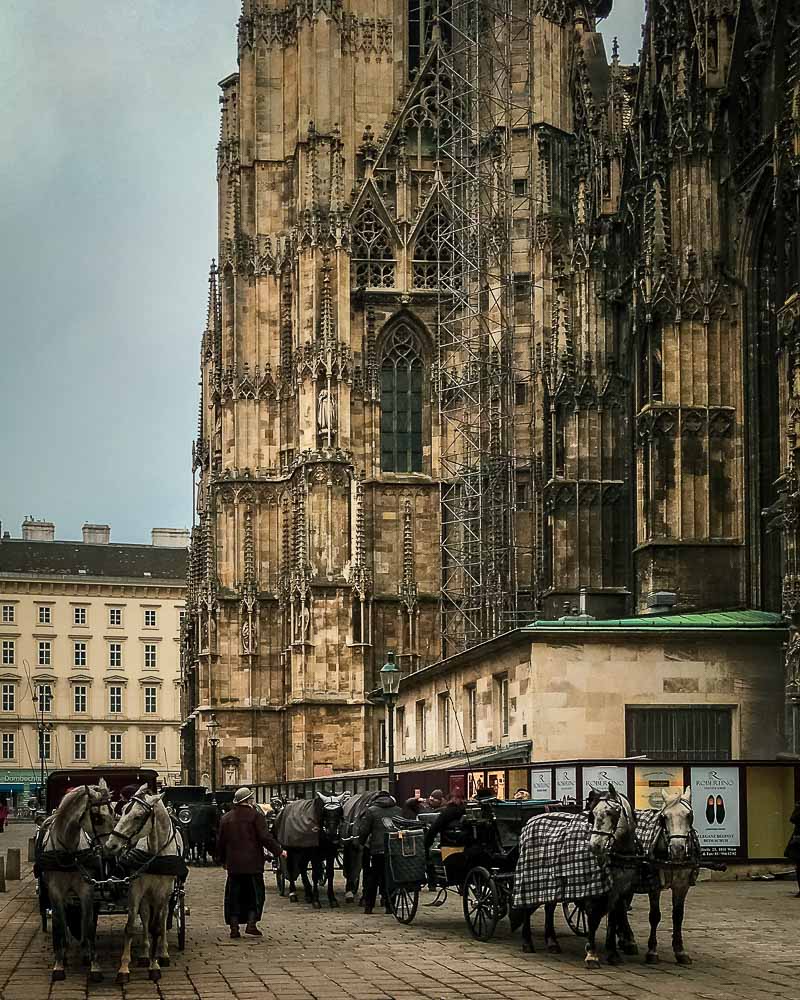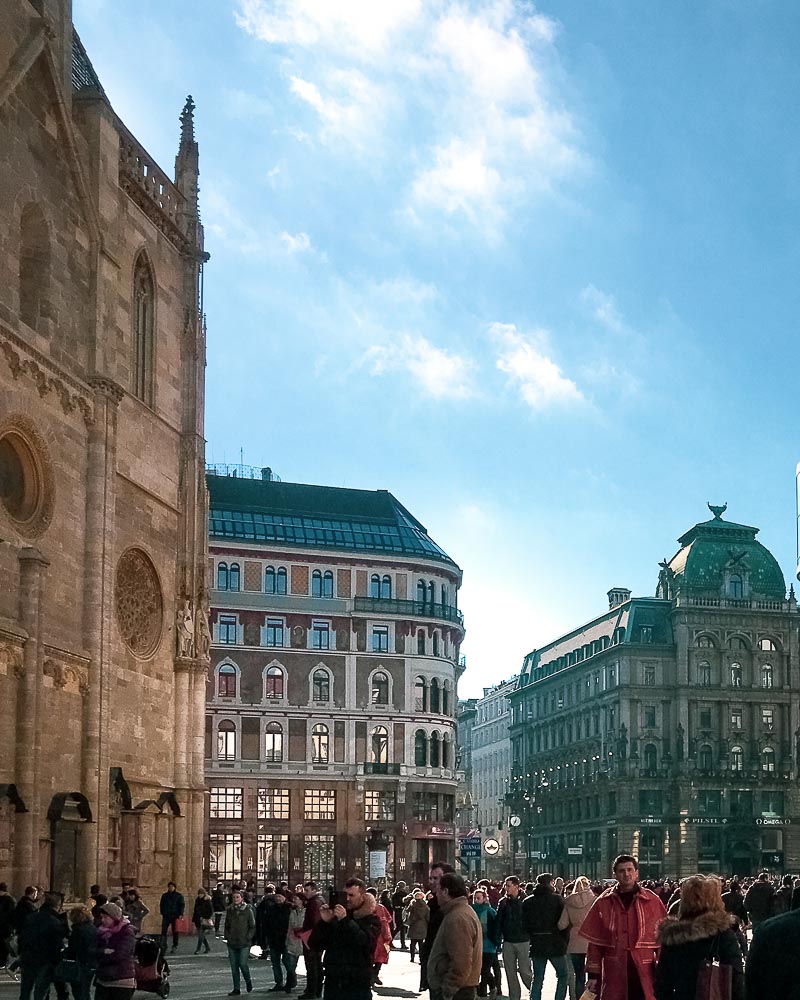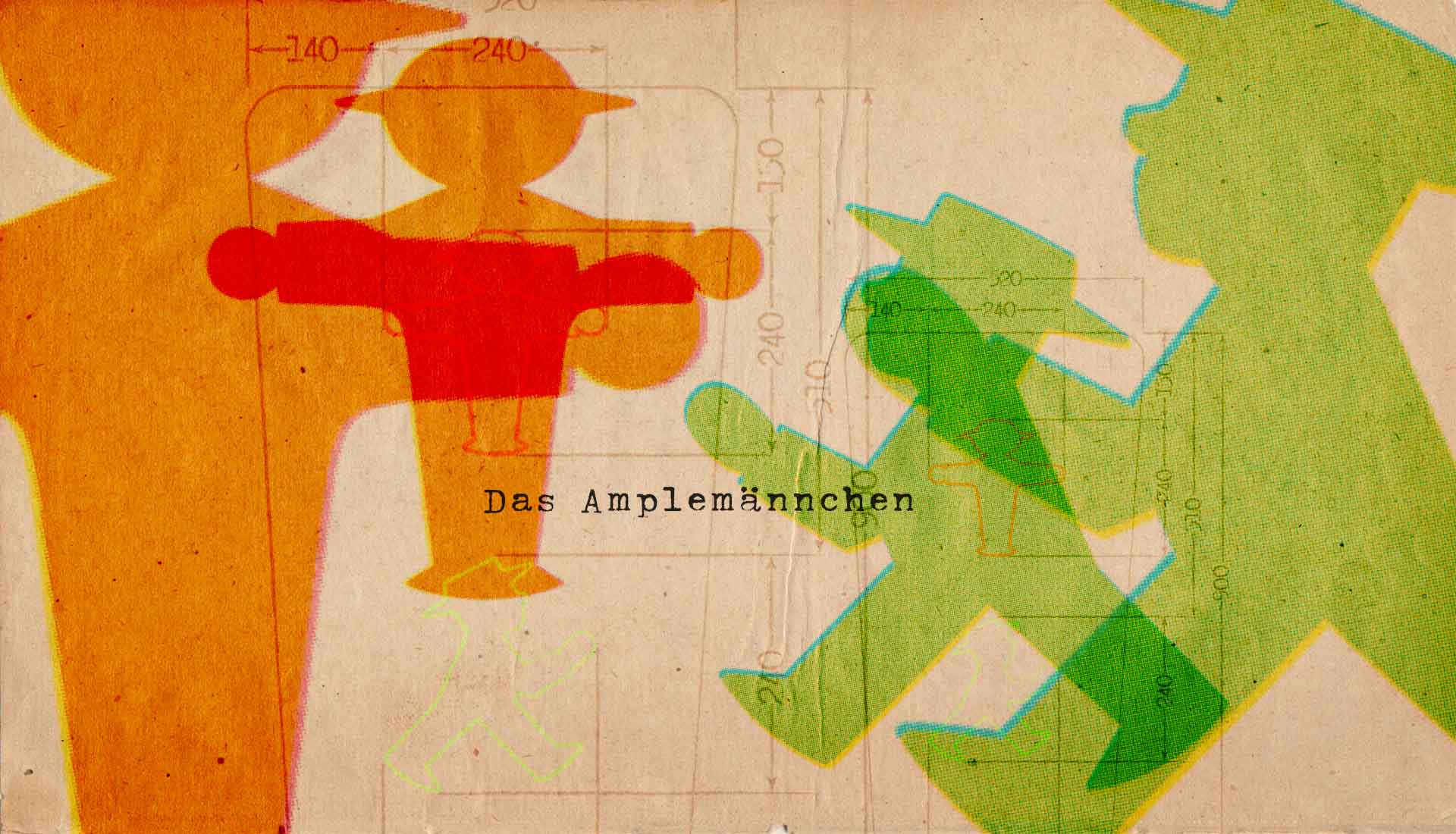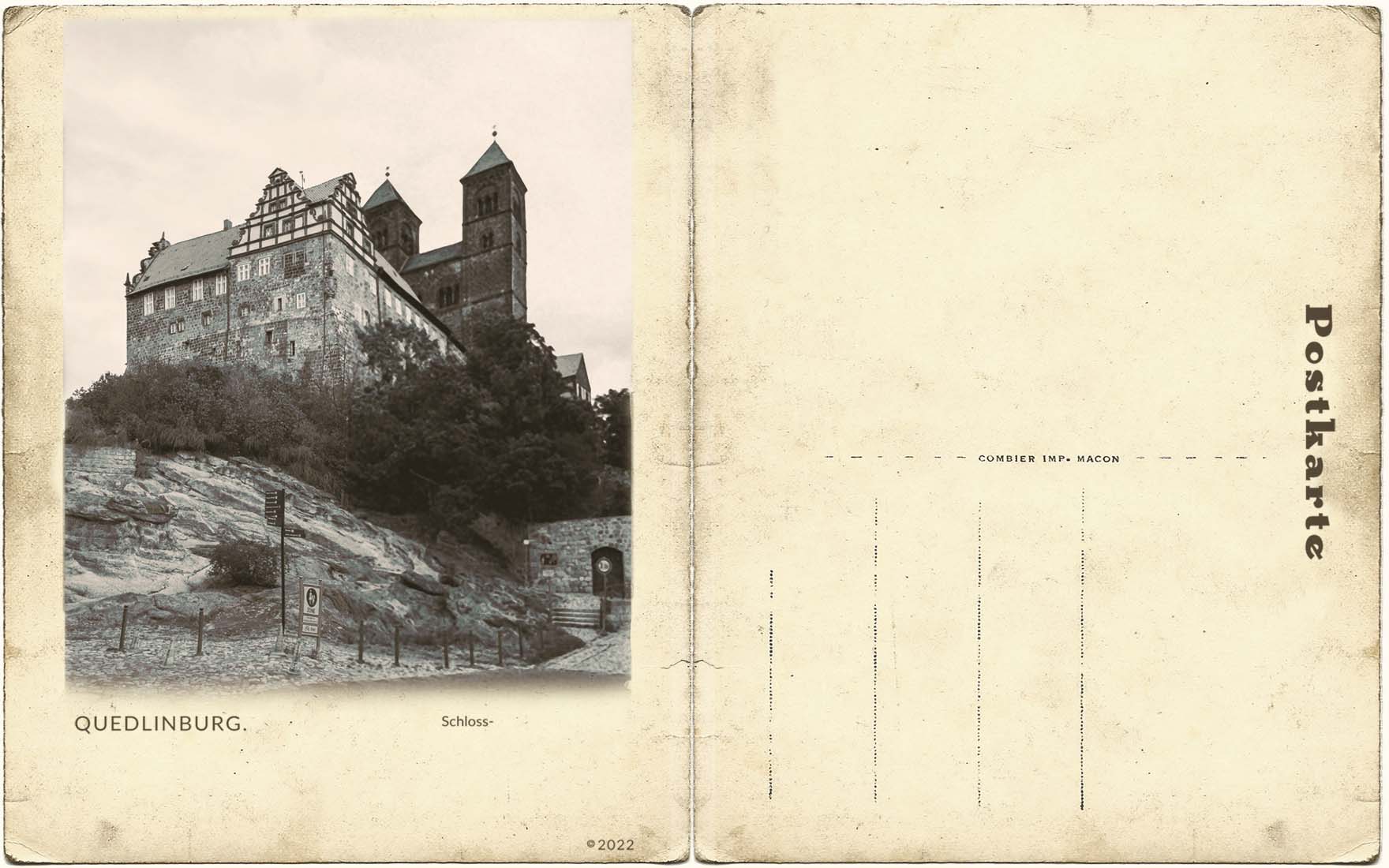he Stephansplatz is a square at the geographical center of Vienna. It is - obviously - named after its most prominent building, the Stephansdom. Before the 20th century, a row of houses separated Stephansplatz from Stock-im-Eisen-Platz, but since their destruction, the name Stephansplatz started to be used for the wider area covering both. Opposite the Stephansdom is the Haas-Haus, a piece of striking modern architecture. Although public opinion was originally skeptical about the combination of the mediaeval cathedral and the glass and steel building, it is now considered an example of how old and new architecture can mix harmoniously. I am not a fan myself. As we wander make our way around the Stephansplatz, trying to take in the beautiful architecture of the cathedral, we are accosted by numerous period costumed men hawking concert tickets. They are plentiful and seemingly omnipresent. We do not stay very long.
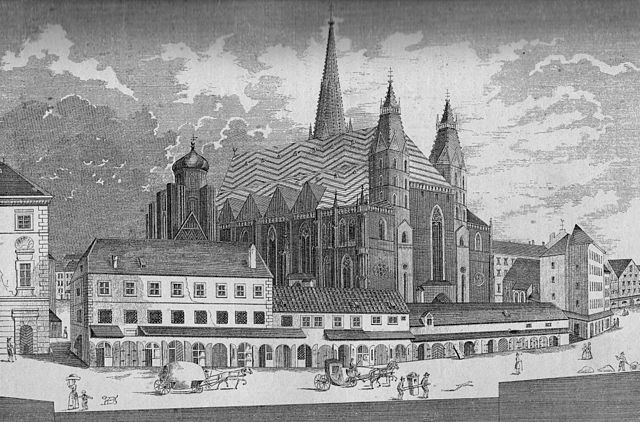
At the beginning of the construction of the cathedral in the 12th century, it lay outside the Vienna city walls. It was not until the expansion of the city around 1200 that St. Stephen’s came under the protection of the city walls. At that time the church was surrounded by a cemetery. It, and with it the square, were affected by several town fires around the middle of the 13th century.
Despite the permanent building activity at the cathedral, St. Stephen’s Square was a central place of communication for the city’s population, namely as a place of funerals, processions on high feast days, passion plays, shows, markets, and probably also court trials. It also seems that the cemetery was a place for gambling. The medieval appearance of the square is difficult to reconstruct but the location of cemetery gates as the positioning of the church portals make it possible to reconstruct these paths.
By 1500, the Cathedral and Cathedral Square were already established as the center of the Habsburg residential and fortified city. This function of St. Stephen’s Square as the center of Vienna resulted in numerous transformations in the following centuries, mainly out of consideration for the needs of traffic and the service sector: the Heiltumsstuhl was demolished in 1699, the one-story row of houses in front of the Riesentor was removed at the end of the 18th century, and the cemetery was abandoned in 1732. At the end of the 19th century, the entire square and its immediate surroundings underwent a fundamental historicist redesign, briefly bringing the Stephansplatz into the center of retail trade once again.
